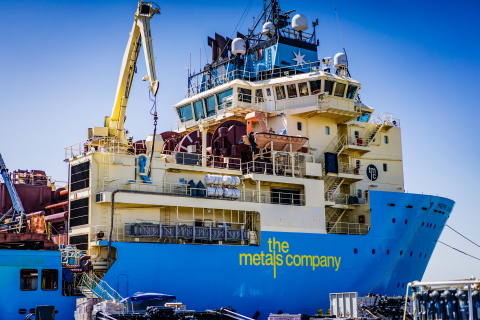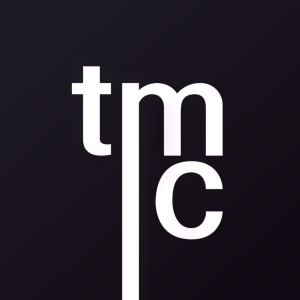The Metals Company Advances Deep-Sea Research Program to Unlock World’s Largest Known Source Of Battery Metals
The Metals Company (TMC) announced the mobilisation of its Environmental Expedition 5C, part of a $75 million deep-sea research program in the Clarion Clipperton Zone. This expedition aims to establish an environmental baseline to assess the impacts of its proposed operations for sourcing critical battery metals from polymetallic nodules. TMC has identified over 1.6 billion tonnes of nodules, enough for 280 million electric vehicles. The project was recently ranked the top nickel project globally, with resource confidence improving from inferred to indicated status.
- Conducting Environmental Expedition 5C to establish a rigorous environmental baseline.
- Identified over 1.6 billion tonnes of nodules, sufficient for 280 million EVs.
- Ranked as the #1 nickel project globally, improving resource confidence from inferred to indicated.
- Forward-looking statements involve significant risks and uncertainties, including regulatory and environmental challenges.
Insights
Analyzing...
-
Offshore expedition 5C is part of a multi-year,
$75 million - The expedition follows The Metals Company’s September listing on NASDAQ, and its earlier identification of more than 1.6 billion tonnes (wet) of nodules across two of its contract areas, containing battery metal resource sufficient for 280 million electric vehicles (EVs) — equivalent to the entire US passenger car fleet.
-
The world’s largest untapped deposit of battery metals — nickel, cobalt, copper and manganese — is contained in polymetallic nodules that sit unattached on the Pacific seafloor in the
Clarion Clipperton Zone (CCZ), betweenHawaii andMexico .

The Company’s fourth environmental campaign this year, Expedition 5C is the latest work package in The Metals Company’s multi-year deep-sea research program intended to establish a rigorous environmental baseline and characterize the potential impacts of its proposed nodule collection operations to source critical battery metals from deep-sea polymetallic nodules.
Setting sail this week aboard the exploration vessel the Maersk Launcher, researchers from the University of Hawaiʻi at Mānoa,
At the researchers’ disposal will be an array of specialized equipment including hydrographic rosettes to collect water samples, a
“The collection and analysis of this baseline data is a critical component of the Environmental, Social and Impact Assessment (ESIA) required to establish the state of the ecosystem as it exists prior to the commencement of nodule collection and to assist in predicting the potential effects on the surrounding environment,” said Dr.
The planet’s largest known source of battery metals
TMC’s NORI-D nodule project — recently ranked as the #1 nickel project in the world by mining.com — is the first in the Company’s project development pipeline. In January,
As countries invest in large-scale clean energy transition programmes and begin to phase out internal combustion engines, hundreds of millions of tonnes of critical battery metals will be needed to decarbonise the world’s energy and transport systems, according to the International
In its recent 100-day supply chain review, the
About
TMC the metals company Inc. (
Forward Looking Statements
Certain statements made in this press release are not historical facts but are forward-looking statements for purposes of the safe harbor provisions under The Private Securities Litigation Reform Act of 1995. Forward-looking statements generally are accompanied by words such as “believe,” “may,” “will,” “estimate,” “continue,” “anticipate,” “intend,” “expect,” “should,” “would,” “plan,” “predict,” “potential,” “seem,” “seek,” “future,” “outlook” and similar expressions that predict or indicate future events or trends or that are not statements of historical matters. The forward-looking statements contained in this press release include, without limitation, TMC’s expectations with respect to the success of its research campaign Environmental Expedition 5C and the results or outcomes of these campaigns and expeditions, respectively. These forward-looking statements involve significant risks and uncertainties that could cause the actual results to differ materially from those discussed in the forward-looking statements. Most of these factors are outside TMC’s control and are difficult to predict. Factors that may cause such differences include, but are not limited to: regulatory uncertainties and the impact of government regulation and political instability on TMC’s resource activities; changes to any of the laws, rules, regulations or policies to which TMC is subject; the impact of extensive and costly environmental requirements on TMC’s operations; environmental liabilities; the impact of polymetallic nodule collection on biodiversity in the CCZ and recovery rates of impacted ecosystems; TMC’s ability to develop minerals in sufficient grade or quantities to justify commercial operations; the lack of development of seafloor polymetallic nodule deposit; uncertainty in the estimates for mineral resource calculations from certain contract areas and for the grade and quality of polymetallic nodule deposits; risks associated with natural hazards; uncertainty with respect to the specialized treatment and processing of polymetallic nodules that TMC may recover; risks associated with collective, development and processing operations; fluctuations in transportation costs; testing and manufacturing of equipment; risks associated with TMC’s limited operating history; the impact of the COVID-19 pandemic; risks associated with TMC’s intellectual property; and other risks and uncertainties indicated from time to time in the final prospectus and definitive proxy statement, dated and filed with the
View source version on businesswire.com: https://www.businesswire.com/news/home/20210928005705/en/
TMC@antennagroup.com
Media | media@metals.co
Investors | investors@metals.co
Source:







